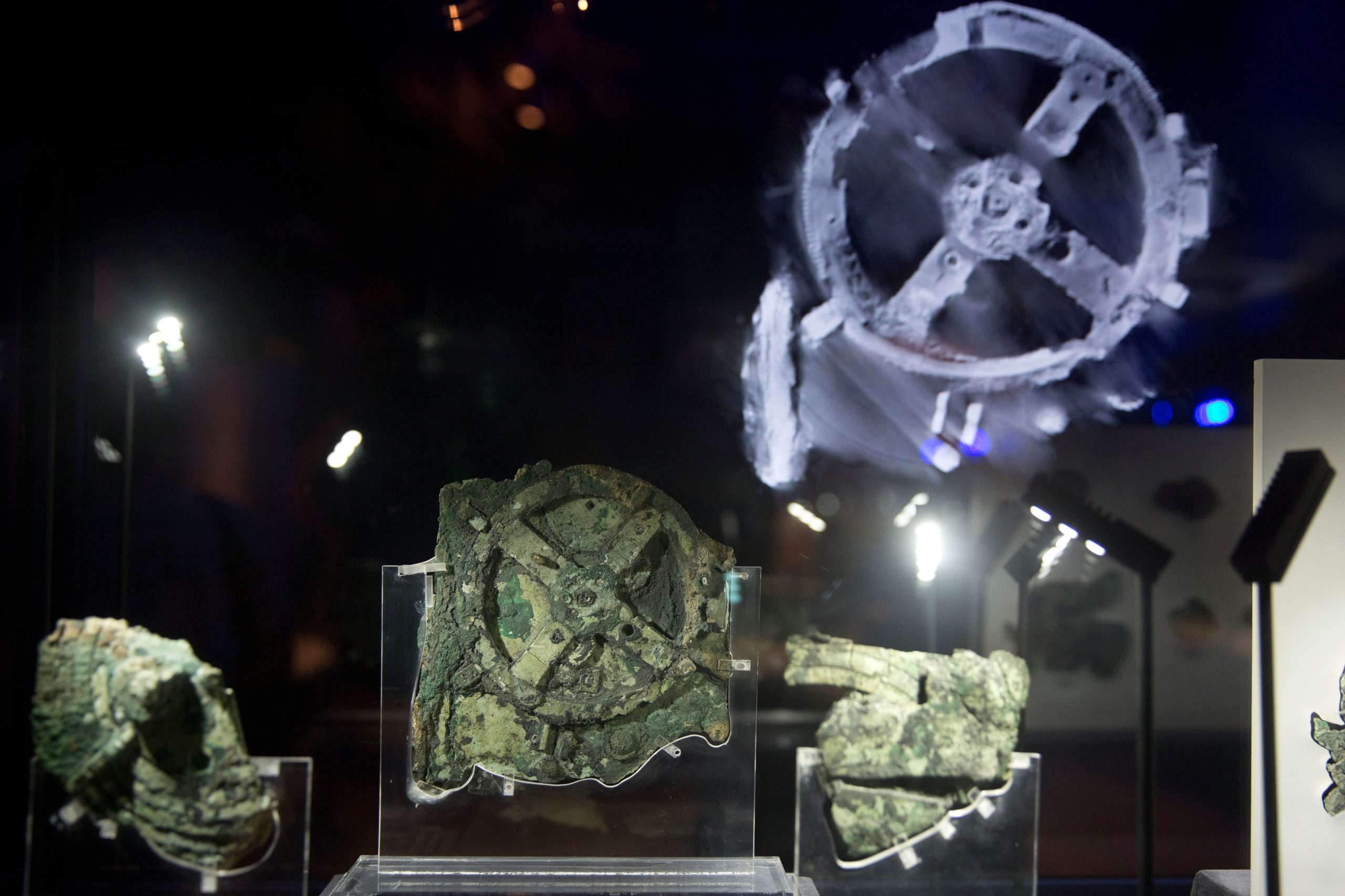Researchers Hail “Big Step” in Decoding Greek Astronomical Device
Known as the Antikythera mechanism, it is a mechanical calculator with which the first Greek astronomers tracked the movements of the planets and their satellites.
UK researchers say they have taken a “big step” in solving the mysterious Antikythera Mechanism, an ancient Greek astronomical device recovered from a treasure ship sunk in 1901.
The first Greek astronomers tracked the movements of the planets and their satellites through the sky and believed that the Sun moved around the Earth.
It is an astronomical calculator, considered a technological marvel of ancient times, and is considered perhaps the oldest mechanical computer in the world.
The 2,000-year-old device, known as the Antikythera mechanism, was recovered by sponge divers from an ancient shipwreck in 1901 near Antikythera, a small island off the southern coast of Greece.
Its interior looks like a clock. About 30 bronze gears were put into gear to calculate the phases of the moon, eclipses, and other celestial information specific to a given date.
Only about a third of the mechanism survived, divided into 82 fragments. For more than a century since its discovery, the device has proven to be a tantalizing puzzle.
High-definition 3D X-rays in 2005 revealed thousands of text characters hidden within the fragments, unread for about 2,000 years.
“It is now divided into many pieces, so reconstructing what it did is a very difficult 3D puzzle,” explains Tony Freeth, Honorary Professor at University College London (UCL).
Freeth and his colleagues reported on Friday (March 12) that they had “solved an important piece of the puzzle” that makes up the ancient mechanical device.
They have created a new theoretical model that fits all the physical evidence and matches the scientific inscriptions engraved on the mechanism itself.
It includes a sample of how the ancient Greeks viewed the cosmos, including the Sun, the Moon, and the planets.
“I think it is an important step, an important advance in our understanding of the mechanism because it recreates what we think was the real aspect of the mechanism,” explains Freeth, lead author of the paper, published Friday (March 12) in the journal Nature’s Scientific Reports.
The researchers say the discovery brings them one step closer to understanding the device’s full capabilities and how accurately it predicted astronomical events. Now they plan to remake the mechanism using old techniques.
“It’s a very fundamental part of our technological history, and the ideas of making machines to calculate things are a long, long time ago,” says Freeth.
“The idea of making a calculating machine with bronze cogwheels says that you can do those calculations with the turn of one hand. You don’t have to do any complicated math to calculate the consequences of your theoretical models of the cosmos. And this is a breakthrough.” .
The team’s research was published on Friday (March 12) in Nature’s Scientific Reports. The device is kept in the National Archaeological Museum of Greece in Athens.





